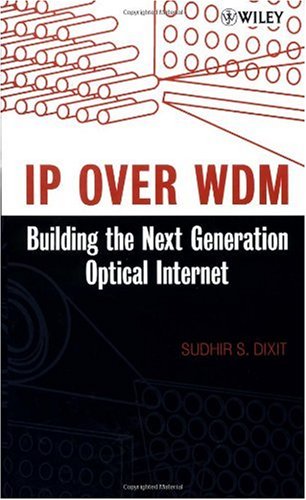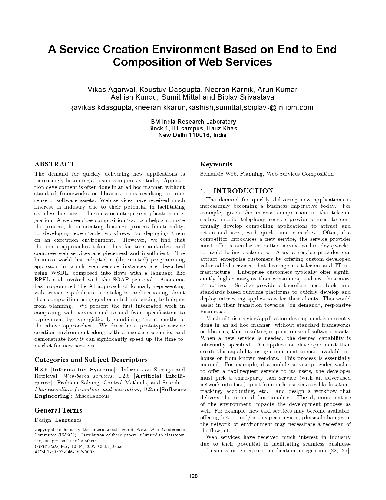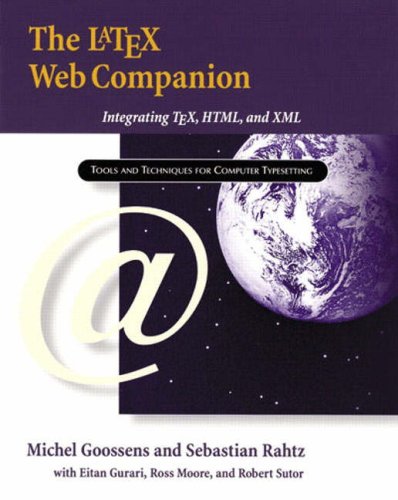Sudhir Dixit0471212482, 9780471212485, 9780471478355
Table of contents :
IP OVER WDM……Page 4
CONTENTS……Page 10
Contributors……Page 20
Preface……Page 22
ACKNOWLEDGMENTS……Page 23
1.1 Introduction……Page 24
1.2 Why IP and Why WDM?……Page 27
1.3 What Does WDM Offer?……Page 28
1.4 Capacity, Interface Speeds, and Protocols……Page 29
1.5 Why IP over WDM?……Page 32
1.6 Book Outline……Page 35
1.7 Concluding Remarks……Page 39
2.1.1 Protocols and Layering……Page 42
2.1.2 Internet Protocol Design: The End-to-End Principle……Page 44
2.2.1 Service Models at the Transport Layer……Page 46
2.2.2 UDP and Connectionless Transport……Page 48
2.2.3 TCP and Connection-Oriented Transport……Page 49
2.3.1 Network Service Models……Page 56
2.3.2 Internet Protocol: Forwarding Paradigm……Page 57
2.3.3 Internet Protocol: Packet Format, Addressing, and Fragmentation/Reassembly……Page 59
2.3.4 Routing in the Internet……Page 64
2.4.1 ATM Basics……Page 68
2.4.2 IP over ATM……Page 70
2.5 IP Switching……Page 72
2.5.1 Connectionless Services over ATM……Page 73
2.5.2 IP Switching Architecture……Page 74
2.6 QoS, Integrated Services, and Differentiated Services……Page 75
2.6.2 Differentiated Services……Page 76
2.7.1 Labels……Page 78
2.8 Summary……Page 79
References……Page 80
3.1 Introduction……Page 82
3.2.1 Propagation in Optical Single-Mode Fiber……Page 83
3.2.2 Chromatic Dispersion……Page 85
3.2.4 Nonlinear Optical Effects……Page 87
3.3 Key Technologies for WDM Systems……Page 91
3.3.1 WDM Transmitters……Page 92
3.3.2 WDM Filter Components……Page 94
3.3.3 Erbium-Doped Fiber Amplifiers……Page 99
3.3.4 Dispersion Compensation……Page 106
3.3.6 Optical Switching Devices……Page 107
3.3.7 Wavelength Converters……Page 110
3.4 Development of WDM Systems……Page 111
3.5 Summary……Page 116
References……Page 118
4.1 Introduction……Page 124
4.2.1 Wavelength-Converter Design……Page 127
4.2.2 Wavelength-Convertible Switch Design……Page 132
4.3.1 Network Design……Page 134
4.3.2 Network Control……Page 136
4.4.1 Analytical Models……Page 137
4.4.2 Related Work on Gain Characterization……Page 146
4.5 Summary……Page 147
References……Page 148
5.1 Introduction……Page 152
5.2 Contention Resolution in Wavelength, Time, and Space Domains……Page 153
5.2.3 Space Deflection……Page 155
5.2.5 Simulation Experiments and Performance Comparison……Page 156
5.3.1 Network Architecture and Routing Policies……Page 166
5.3.2 Illustrative Results……Page 167
5.4.1 Network Architecture and Routing Policies……Page 170
5.4.2 Illustrative Results and Discussion……Page 171
5.5.1 Node Architecture……Page 172
5.5.2 Simulation Configuration……Page 173
5.5.3 Illustrative Results……Page 174
5.6.1 Node Architecture……Page 175
5.6.2 Simulation Configuration and Numerical Results……Page 176
References……Page 178
6.1 Introduction……Page 180
6.2.1 Slotted Networks……Page 181
6.2.2 Unslotted Networks……Page 184
6.2.3 Contention Resolution……Page 185
6.2.4 Header and Packet Format……Page 192
6.3 Photonic Slot Routing……Page 194
6.3.1 Architecture for PSR Mesh Networks……Page 195
6.3.2 PSR Access Control Protocols……Page 196
6.4 Optical Burst Switching……Page 198
References……Page 200
7.1 Introduction……Page 204
7.2 Transport Optical Networks: A Global Perspective……Page 205
7.3.1 Access Networks……Page 210
7.3.2 Metropolitan Area Networks……Page 211
7.3.3 Core Networks……Page 212
7.3.4 ISP Networks……Page 213
7.4.1 Access Networks……Page 214
7.4.2 Metropolitan Networks……Page 215
7.5.1 Medium Utilization Ratio……Page 217
7.5.2 Mean Access Delay……Page 218
7.5.3 Power of a MAC Protocol……Page 219
7.5.4 QoS Provisioning……Page 220
7.6.1 Passive Optical Stars……Page 224
7.6.2 Dual Counterrotating Rings……Page 232
7.7 Optical Access Networks……Page 239
7.7.1 A-PON Access Systems……Page 242
7.7.2 B-PON Access System……Page 246
References……Page 248
8.1.1 Traffic Growth……Page 252
8.1.2 Evolution of the First Mile……Page 253
8.1.3 Next-Generation Access Network……Page 254
8.2.1 Optical Splitters/Combiners……Page 255
8.2.2 PON Topologies……Page 256
8.2.3 WDM versus TDM PONs……Page 257
8.2.4 Burst-Mode Transceivers……Page 259
8.3.1 Why Ethernet?……Page 260
8.3.2 Principle of Operation……Page 261
8.3.3 Multipoint Control Protocol……Page 264
8.3.4 EPON Compliance with 802 Architecture……Page 267
8.4 Performance of EPON……Page 272
8.4.1 Model Description……Page 273
8.4.2 Bandwidth-Allocation Schemes……Page 276
8.4.3 Simulation Results……Page 279
8.4.4 Performance of Limited Service……Page 282
8.5.1 Slot Utilization Problem……Page 284
8.5.2 Circuit Emulation (TDM over IP)……Page 286
8.5.3 Real-Time Video and Voice over IP……Page 287
8.6 Security Issues……Page 291
8.6.3 Solving the Problem Using Encryption……Page 292
8.7.1 Wavelength Upgrade……Page 294
8.8 IEEE P802.3ah Status……Page 295
8.9 Summary……Page 296
References……Page 297
9.1 Introduction……Page 300
9.2.1 Transparent Terabit Switching and Routing……Page 302
9.2.2 Opaque Terabit Switching and Routing……Page 303
9.3.1 Traffic Aggregation……Page 305
9.3.5 Quality of Service……Page 306
9.4.1 Generic Architecture……Page 307
9.4.3 Buffering Schemes……Page 308
9.4.4 Switching Fabric……Page 310
9.5.1 IP-Based IPI and OPI……Page 313
9.5.2 IP-Based Electronic Controller……Page 314
9.6.1 Without MPLS……Page 315
9.6.2 With MPLS……Page 316
References……Page 318
10.1 Introduction……Page 322
10.2 Optical Network Architecture……Page 324
10.3 Optical Network and Traffic Engineering……Page 327
10.3.1 Routing and Wavelength Assignment……Page 329
10.4 Optical Network Design and Capacity Planning……Page 332
10.4.1 Physical Topology Design……Page 333
10.4.2 Virtual Topology Design……Page 334
10.4.3 Design of Survivable Optical Networks……Page 337
10.5.1 Route Computation……Page 339
10.5.2 Wavelength Assignment……Page 342
10.5.3 Performance of Dynamic RWA Algorithms……Page 343
10.6 Control Plane Issues and Standardization Activities……Page 344
References……Page 347
11.1 Introduction……Page 352
11.1.1 Network Scenario……Page 353
11.2.1 Self-Similarity……Page 354
11.2.2 Demand Analysis……Page 355
11.2.3 Connection-Level Analysis……Page 357
11.3.1 First-Generation WDM Networks……Page 361
11.3.2 Second-Generation WDM Networks……Page 363
11.3.3 Signaling……Page 365
11.3.4 Framing Aspects for IP over WDM……Page 369
11.4 End-to-End Issues……Page 370
11.4.1 TCP for High-Speed and Split TCP Connections……Page 372
11.4.2 Performance Evaluation of File Transfer (WWW) Services over WDM Networks……Page 373
11.5 Summary……Page 375
References……Page 377
12.1 Introduction……Page 380
12.2 Internet Protocol and Routing……Page 381
12.3 Routing in Datagram Networks……Page 382
12.3.2 Distance Vector Algorithm……Page 383
12.3.4 Hierarchical Routing……Page 384
12.3.5 Common Routing Protocols……Page 385
12.4 Wavelength-Routing Networks……Page 386
12.4.2 RWA Algorithm……Page 388
12.5 Layered Graph Approach for RWA……Page 389
12.5.2 Dynamic RWA Algorithm without Wavelength Conversion (Based on a Layered Graph)……Page 390
12.5.4 Simulation Results without Wavelength Conversion……Page 392
12.5.5 Simulation Results with Wavelength Conversion……Page 394
12.6 VWP Approach for Design of WDM Networks……Page 395
12.6.2 SPAWG Implementation……Page 396
12.6.3 SPAWG Algorithm……Page 397
12.6.4 Simulation Results with Wavelength Conversion……Page 398
12.6.5 WDM Network Design with Non-Poisson Traffic……Page 400
12.8 IP-over-WDM Integration……Page 404
12.8.1 Interconnection Models……Page 405
12.9.1 Network Model……Page 406
12.10.1 Hierarchical/Integrated Optical Node/Network Models……Page 410
12.10.2 Waveband Routing Models……Page 411
12.10.3 Hierarchical Online Routing Algorithm……Page 413
12.11.2 Diversity Routing Constraints……Page 415
12.12 Summary……Page 417
References……Page 418
13.1 Introduction……Page 420
13.2.1 Protocol Aspect of OBS……Page 421
13.2.2 Architectural Aspect of OBS……Page 422
13.2.3 Signaling in the Optical Internet……Page 426
13.2.4 Burst Assembly……Page 428
13.3 QoS Provisioning with OBS……Page 430
13.3.1 Class Isolation without FDLs……Page 431
13.3.2 Class Isolation with FDLs……Page 432
13.4.1 Network Failure Detection……Page 434
13.4.2 OBS Restoration……Page 435
13.4.3 Bossy Channel Restoration and Unnecessary Reservation……Page 439
13.5 Summary……Page 440
References……Page 441
14.1 Introduction……Page 444
14.2.1 Telecommunication NC&M……Page 445
14.2.2 Internet Network Control and MPLS Traffic Engineering Control Plane……Page 446
14.3 MPlS/GMPLS Control Plane for Optical Networks……Page 450
14.3.1 Resource Discovery and Link-State Information Dissemination……Page 451
14.3.2 CSPF Path Computation……Page 452
14.3.3 Wavelength Assignment……Page 453
14.3.4 Restoration Management……Page 454
14.3.5 Signaling……Page 455
14.3.6 GMPLS Signaling Functional Requirements……Page 458
14.3.8 Adjacencies……Page 459
14.3.9 Link Management Protocol……Page 460
14.4.1 LDP Signaling Protocol in the MPLS Control Plane……Page 461
14.4.2 CR-LDP……Page 468
14.4.3 Optical Extension to CR-LDP……Page 472
14.4.5 Resource Reservation Protocol……Page 473
14.4.6 RSVP-TE……Page 477
14.4.9 Signaling Protocols Comparison……Page 480
14.5 Optical Internetworking and Signaling Across the Network Boundary……Page 482
14.6 Sample IP-Centric Control Plane for Optical Networks……Page 484
14.6.2 Connection Module……Page 486
14.6.3 Resource Management Module……Page 488
14.6.4 Protection/Restoration Module……Page 491
References……Page 492
15.1 Introduction……Page 496
15.1.1 Importance of Survivability in IP-over-WDM Networks……Page 497
15.2 IP-over-WDM Architecture……Page 498
15.3.1 Protection……Page 502
15.4 Survivable Routing Algorithms……Page 505
15.4.2 Path Routing……Page 506
15.4.3 Cost Function……Page 507
15.4.4 Survivable Routing Algorithms……Page 508
15.5.1 IP Layer……Page 510
15.5.2 WDM Layer……Page 514
15.5.3 Illustrative Example……Page 516
15.5.5 Multilayer Survivability Mechanisms……Page 519
15.6.1 Fault Detection……Page 526
15.7 Signaling Protocol Mechanism……Page 527
15.8 Survivability in Future IP-over-Optical Networks……Page 529
15.9 Summary……Page 531
References……Page 532
16.1 Introduction……Page 534
16.3 Intelligent Optical Networks……Page 535
16.4 Internetworking Models to Support Optical Layer Intelligence……Page 536
16.5 Overlay Model……Page 539
16.5.2 Dynamic Overlay Model……Page 541
16.6 Peer Model……Page 544
16.7.1 Internet Engineering Task Force……Page 546
16.7.2 Optical Internetworking Forum……Page 548
16.7.3 International Telecommunications Union……Page 549
16.7.4 IEEE 802: Emerging Ethernet Standards……Page 550
16.8 Gigabit Ethernet……Page 551
16.8.1 10-Gigabit Ethernet……Page 552
16.8.3 IEEE 802.3af Task Force……Page 553
16.9 Summary……Page 554
References……Page 555
Index……Page 558







Reviews
There are no reviews yet.